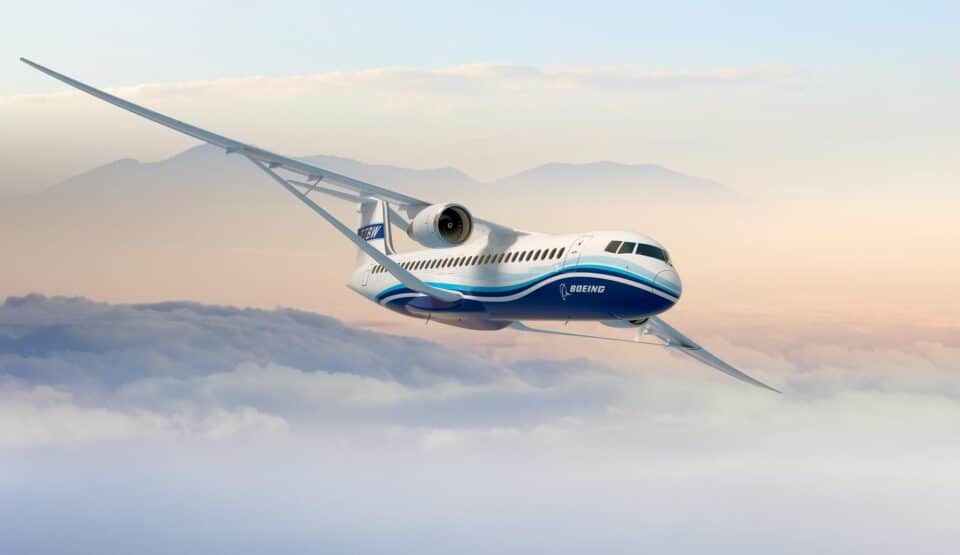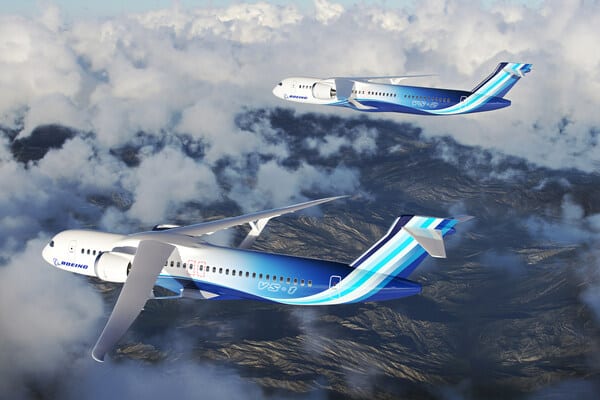Aerospace
NASA may build a new narrow-body Boeing aircraft wing that would cut emissions by 30%.

Boeing [NYSE: BA] and its industry team have been chosen by NASA to oversee the creation and testing of a full-scale Transonic Truss-Braced Wing (TTBW) demonstrator aircraft.
Future designs will be influenced by the technology shown off and put to the test as part of the Sustainable Flight Demonstrator (SFD) initiative, which may result in ground-breaking aerodynamic and fuel efficiency improvements.
Depending on the mission, a single-aisle airplane with a TTBW layout could, when coupled with anticipated improvements in propulsion systems, materials, and systems architecture, cut fuel consumption and emissions by up to 30%. The SFD program aims to promote both the objectives outlined in the White House’s U.S. Aviation Strategy and the civil aviation industry’s commitment to achieving net zero carbon emissions by 2050.

NASA has selected Boeing and its industry team to lead the development and flight testing of a full-scale Transonic Truss-Braced Wing (TTBW) demonstrator airplane.
Greg Hyslop, chief engineer and executive vice president of Engineering, Test & Technology of Boeing, stated that the SFD program “has the potential to make a significant contribution toward a sustainable future.” It offers the chance to create, construct, and test-fly a full-scale experimental plane while tackling brand-new technical issues.
Advanced propulsion systems, which are now constrained by a lack of underwing space in today’s low-wing airplane layouts, could potentially be accommodated by ultrathin wings braced by struts with bigger spans and higher aspect ratios. Boeing will combine brand-new components with existing car parts to create the prototype vehicle.
NASA’s funding through the SFD Space Act Agreement totals $425 million. The SFD program will also leverage up to $725 million in funding from Boeing and its industry partners to shape the demonstrator program and meet the resource needs required. Separately, Boeing’s previous internal investments for recent phases of sustainable aviation research total $110 million.
The TTBW airframe concept is the result of more than a decade of development supported by NASA, Boeing, and industry investments. Under previous NASA programs including the agency’s Subsonic Ultra Green Aircraft Research program, Boeing conducted extensive wind tunnel testing and digital modeling to advance the design of the TTBW. Early conceptual studies started under NASA’s Environmentally Responsible Aviation program.

Aerospace
Boeing Transfers Rocket Stage to NASA, Paving Way for Human Moon Mission

Boeing has achieved a significant milestone by providing NASA with the second core stage of the Space Launch System (SLS) rocket.
This crucial component, crafted at NASA’s Michoud Assembly Facility (MAF), is set to propel the Artemis II crew into lunar orbit, marking humanity’s return to deep space after a 50-year hiatus.
The monumental Boeing-built rocket stage, the largest element of the Artemis II mission, will embark on a journey aboard the Pegasus barge, traveling 900 miles to NASA’s Kennedy Space Center.
Comparison of two legendary aircraft B777x vs B747 aircraft:Click here
Upon arrival, it will be meticulously integrated with other essential Artemis II components, including the upper stage, solid rocket boosters, and NASA’s Orion spacecraft within the iconic Vehicle Assembly Building. This intricate integration process is a vital step toward the eagerly anticipated Artemis II launch, slated for 2025.
“Boeing-built products helped land humankind on the moon in 1969, and we’re proud to continue that legacy through the Artemis generation,” remarked Dave Dutcher, vice president and program manager for Boeing’s SLS program. “Together, with NASA and our industry partners and suppliers, we are building the world’s most capable rocket and paving the way to deep space through America’s rocket factory in New Orleans.”
NASA, Lockheed Martin Reveal X-59 Quiet Supersonic Aircraft:Click here
The delivery of Core Stage 2 marks a significant achievement in the evolution of the SLS rocket. Towering over 200 feet and powered by four RS-25 engines, this core stage, coupled with two solid-fueled booster rockets, will generate a staggering 8.8 million pounds of thrust. This immense power is crucial to launching Artemis II and future missions into the vast expanse of space.
The SLS rocket stands unparalleled in its capability to transport both crew and substantial cargo to the moon and beyond in a single launch. Its extraordinary capacity will facilitate the delivery of human-rated spacecraft, habitats, and scientific missions to destinations including the moon and Mars, ushering in a new era of space exploration.
-

 Travel1 week ago
Travel1 week agoAir India to Expand US Operations with Three New Routes After a Decade
-

 Travel2 weeks ago
Travel2 weeks agoWhy We Should Avoid These Stamps in a Passport
-

 Airlines1 month ago
Airlines1 month agoInvestigations Reveal Fake Chinese Titanium in Boeing and Airbus Jets
-

 Tech4 weeks ago
Tech4 weeks agoChina’s CATL Plans 1,800-Mile Electric Plane Launch by 2027
-

 Airport3 days ago
Airport3 days agoTop 10 Largest Airports in the World by Size
-

 Aerospace4 weeks ago
Aerospace4 weeks agoChina’s Fighter Jets Turn Wings into Autonomous Drones
-

 Airlines4 days ago
Airlines4 days agoAir India Rolls Out A350s for Delhi-New York JFK and Newark Routes
-

 Defence3 weeks ago
Defence3 weeks agoBoeing Enhances Chinook with New Engines and Block II Upgrades at $96 Million







